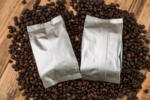Every coffee enthusiast knows Kopi Luwak in the world as a premium quality coffee variant from the olden days. Due to its high demand in the market, the acquisition of this coffee also significantly impacts the balance of the ecosystem.
Table Of Contents
−- The history of Kopi Luwak
- Kopi Luwak in the 20th century
- Production and processing of Kopi Luwak
- The taste of kopi luwak
- Certification
- The future of Kopi Luwak
- What is so special about kopi luwak?
- The downsides of civet coffee
- Kopi Luwak, without the use of animals
- Brewing espresso from Kopi Luwak
- Conclusion
- FAQs (Frequently asked questions)
The price per kilogram of this coffee can cost as much as $700, which is why it is considered a coffee for the elite and one of the most expensive coffee in the world. To know why this particular type of coffee costs this much, let’s look at its history, processing, quality, flavor, and significance in wildlife.
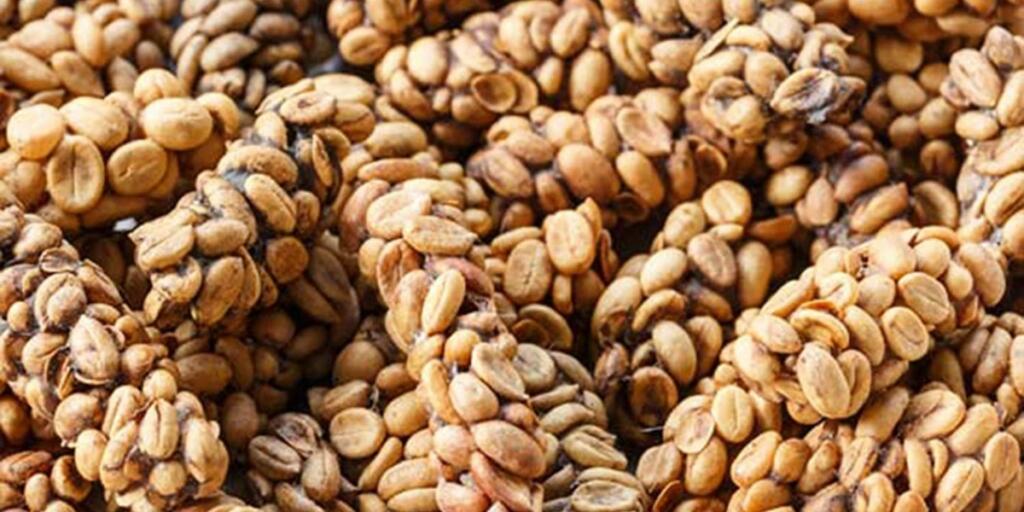
The history of Kopi Luwak
Kopi Luwak was first discovered in the country of Indonesia, and that was where the name was also established. “Kopi” means coffee, and “Luwak” is Indonesian for the Asian palm civet cat. The two are what make Kopi Luwak unique and exotic.

Its discovery goes way back to the 17th century during the domination of the Dutch East Indies, which is now presently called Indonesia. The governor sent a batch of saplings of Arabica coffee to his counterpart.
In the year 1711, the plant grew into a mature tree and produced the first batch of coffee that was sent to Europe, making it the only place outside Africa and Arabia that cultivates and mass produces coffee.
The economy of the Dutch suffered a crisis by the early 19th century. To remedy this, a new cultivation system was developed in which the local farmers could no longer benefit from their produce for personal consumption. The farmers received this poorly, so they concocted new ways to be still able to enjoy coffee.
Some of the farmers noticed that few coffee beans were left in the droppings of the Asian Palm Civet, so they collected these remnants, cleaned them, and brewed them. The Dutch elite tasted this new formulation and found it better than their current coffee.
This is where the marketing for the elite-class coffee began and why it is much more expensive than regular coffee. The method of acquiring the beans and obtaining the flavor required a lot of labor and manpower. The high demand but limited supply kept the price high.
Kopi Luwak in the 20th century
The western hemisphere only came to know about the existence of Kopi Luwak later in the 19th century, specifically in 1991. One kilogram of Kopi Luwak beans was brought to the United Kingdom by Tony Wild, the coffee director of the British firm Taylors of Harrogate. He already knew the coffee a decade earlier but decided not to publicize it until then.
The public and the media took the news very well, spreading it to other parts of the globe. It fascinated many people from both the elite and the working class. The coffee was featured in the Oprah Winfrey show and the Hollywood movie ‘The Bucket List.’ Watch a snippet of the scene below.
But the popularity of the coffee variant came at a price. This led to the increase in captivity of civet cats. Producers of the coffee resorted to cruel and brutal ways to obtain Kopi Luwak. The animals were captured, caged, and force-fed coffee beans. They were stripped of their natural diet, habitat, and living.
This resulted in the animals’ failing health due to their impaired diet and captivity. Many of them have begun to exhibit self-mutilating behaviors, fighting with their kind, shedding their fur, having traces of blood in their waste, and died. Watch the video below to get a glimpse of their situation.
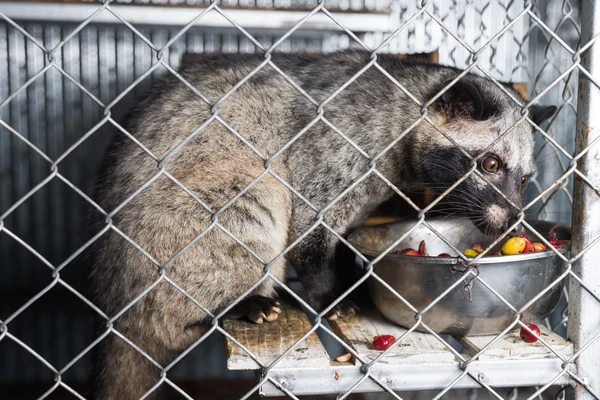
Tony Wild was not proud of the outcome. He then started a campaign to end Kopi Luwak production once and for all to preserve wildlife. But some negotiated for a regulated and ethical production instead. Programs to authorize and certify coffee producers were formed to regulate the production of the said coffee variant.
Production and processing of Kopi Luwak
Kopi Luwak is the term used for coffee derived from coffee beans that are excreted together with the feces of Asian palm civets (Paradoxurus Hermaphroditus). It is not a name of a coffee bean variety but rather a literal translation of how the beans are obtained. Kopi is the Indonesian term for coffee, while Luwak is what the locals call the Asian palm civet.
Cherries are part of the natural food consumption of wild civets. The animals eat coffee beans enclosed in a cherry-like fruit. They choose the ripest and most flavorful coffee cherries, which are also the ones used in making coffee beans with the richest flavor.
Because the coffee beans are indigestible in the gastrointestinal tract of the civets, they excrete them as a whole, clumped together with the solid waste.
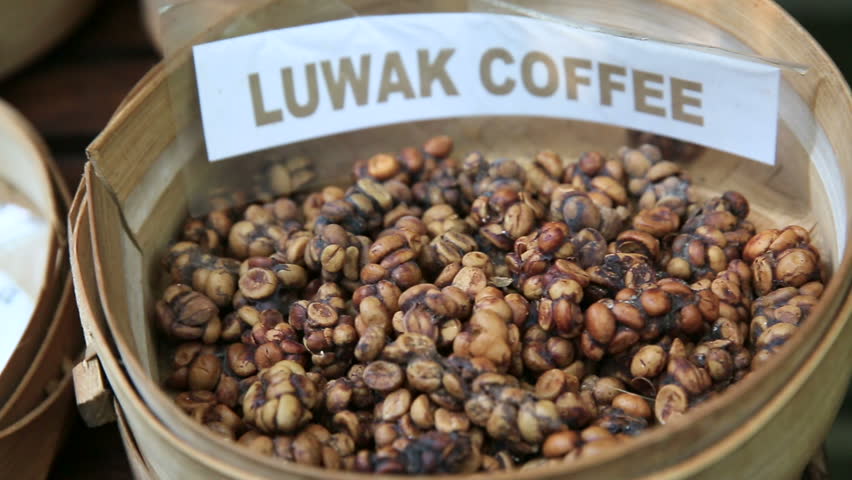
The normal acid of the civet’s stomach will digest the outer skin of the coffee cherries and ferment the beans before they are excreted from their bodies. The fermentation gives the beans a distinct flavor.
The beans undergo an enzymatic process that modifies the molecular structures of the protein constituents of the beans. The protein, specifically the alkaloids, imparts the bitter taste of the coffee beans. The more alkaloids present, the more bitter the taste of the beans will be.
Mass production of kopi luwak beans became more prevalent with increased demand. Civets are being held in captivity on farms to maintain a steady supply.
But the ways the animals are treated just to acquire the beans are inhumane and borderline brutal. They are captured, caged, and force-fed coffee cherries to increase supply. The usual cycle of feeding and excretion takes around a day and a half.
The feces are then collected, cleaned, sorted, washed, and dried before they are prepared for roasting. Afterward, the beans are packaged and distributed.
The unique taste of kopi luwak is believed to be attributed to the chemical processes it undergoes in the gastrointestinal tract of the civet. The tedious process of obtaining said coffee variant correlates to its high price.
The other name of kopi luwak is cat-poop coffee because the Asian palm civet is often associated with the cat species. However, this is a false notion since palm civets are not members of the Felidae family. They are under the Viverridae family, which are nocturnal mammals native to the continent of Asia.
The taste of kopi luwak
The high-priced luxury products on the market today are often harmful to the well-being of animals and the environment. How the raw materials are obtained can cost the lives of wildlife and destroy nature.
Despite the harm that it brings to civets, Kopi Luwak is regarded as a superior coffee variant among others because of two reasons. Firstly, civets are very selective regarding what coffee cherry they eat.
Only the ripest coffee cherries make it into their digestive system. This brings us to the second reason – the digestive enzymes process the coffee beans and impart a unique flavor that many coffee lovers favor.
This emphasizes the counterproductive method of force-feeding the civets since they won’t be choosing the best ones for themselves anymore.
Now, in terms of the second reason, scientists from the University of Guelph in Canada conducted a study back in 2022 clarifying the safety of the coffee beans that are processed in the digestive system of the civet.
The researchers also detected some traces of pathogenic microorganisms, but they can easily be remedied with thorough washing. Remnants of fruit pulp can also be removed via washing.
The research also cited comparisons between Kopi Luwak and Colombian coffee beans. Red and yellow tones were observed in Kopi Luwak, and they were also less pitted due to the conditions they underwent in the digestive system of the civet.
However, this would not affect the flavor. It is only an inference because of the changes in protein content and volatile organic compounds, which is why it was assumed that it might taste differently.
Kopi Luwak contains less protein compared to Colombian beans. We believe that they may have been degraded during the enzymatic processes. In terms of volatile compounds, there were also variations in composition between the two.
However, we cannot immediately attribute the less bitter taste of Kopi Luwak to the protein content. More studies still need to be done to confirm.
Massimo Marcone, the study’s lead scientist, says that “people are buying this product for the mystique, not necessarily for the flavor.” Although some studies closely study the flavor itself, clear conclusions still cannot be formed since Kopi Luwak is not a type of coffee per se but simply another method of processing. The specific coffee bean would still vary as well as the taste.
You would be interested to know that professional coffee experts are not very fond of the taste of Kopi Luwak.
An experiment by Rocky Rhodes of the International Coffee Consulting Group compared the taste of coffee beans of the same variety and conditions processed with and without civet cats. He used the Specialist Coffee Association of America scale as a basis for his point system.
As it turns out, Kopi Luwak scored lowest among the four coffee types he tasted. He does not think that the processes that the coffee went through in the civet’s digestive tract improved the taste in any way at all.
The artisan coffee producer, George Howell, was also not impressed with the production process. He warned buyers to be wary of high-priced items because this does not always guarantee high quality.
Even those who are not coffee experts say that Kopi Luwak does not live up to its name and prestige that it is on. “Petrified dinosaur droppings” were the exact words of Tim Carman from the Washington Post when he was asked to describe Kopi Luwak.
Certification
Safe to say, Kopi Luwak is nothing but a gimmick. It is a ploy to sell overpriced yet awful coffee. However, we can’t also deny the possibility that the coffee ingested by civets might also be a different product altogether produced by animals that aren’t under a lot of distress and are treated better.
Many certification programs have been established to set up for the ethical production of Kopi Luwak and to provide consumers with coffee obtained from wild civet cats. The Rainforest Alliance and UTZ have programs to protect the civets and, at the same time, support coffee farmers to sell their products at reasonable prices effectively.
But their implementation is flawed and does not do enough to protect the animals. Their one-off inspection does not guarantee full protection for the civets.
Coffee producers pay for an inspection to be conducted on their plantation. They are given a “wild” Kopi Luwak certification if there are no caged civets found in the area. They can just as easily cage the civets once their certification is secured. Sadly, according to some insiders and workers, this happens a lot in the industry.
A farmer revealed to a PETA investigator that it is not plausible to produce wild kopi luwak. There is somehow a fraud involved in the mislabeling of captured civets to get through the certification process.
Stricter measures can still be done by paying higher certification fees for random checking of the plantation. If farmers are guilty of keeping civets captive, their certifications can be revoked. They can be fined or be banned entirely from producing and selling.
The merging of Rainforest Alliance and UTZ in January 2018 brings hope. A new certification system was introduced in 2019 to “maximize positive social, environmental, and economic impact while offering farmers an enhanced framework to improve their livelihoods while protecting the landscapes where they live and work.”
Though the well-being of wildlife was not mentioned, let us assume that it was an oversight on their part. The said system will still undergo a far-reaching consultation.
The future of Kopi Luwak
Word travels fast. Many consumers are now aware of the brutal conditions in which civet cats are kept to obtain coffee. Because of that, the demand and sales of kopi luwak are declining. The “bad press” has negatively affected the pricing and sales of the product, according to Mulyono Susilo, Chairman of the Central Java branch of the Association of Indonesian Coffee Exporters (AEKI) in 2015.
In 2013, one kilogram of kopi luwak cost $77 but dropped to only $19 two years later. This compelled AEKI to take measures to save the product’s reputation and encourage customers to patronize it again.
What is so special about kopi luwak?
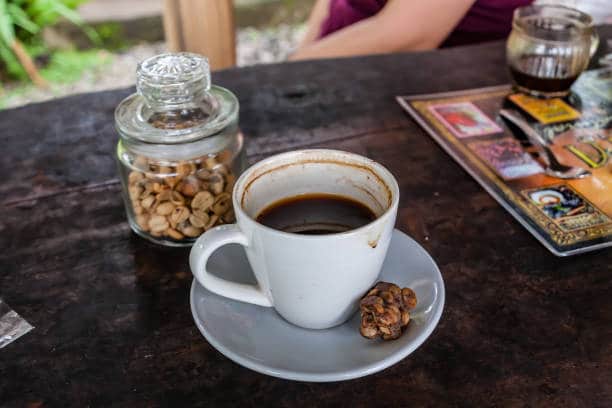
The appeal of coffee from feces is somewhat disgusting. But for some reason, there are still people who are fond of it. Somehow, the notion that wild civets only select the best coffee cherries to eat ensures that the coffee beans they produce have the richest flavor.
The enzymatic processes that the coffee undergoes inside the civet’s stomach also add to the improvement of the quality.
How does that happen? The cherries are degraded by stomach acid, so the only indigestible product left is the beans. This is a form of efficient washing process which makes the beans ready for drying and roasting. Mold will then be unable to grow on the bean, so the coffee produced will taste better.
The downsides of civet coffee
You can only seldom encounter Kopi Luwak, which is wildly sourced. Free-range kopi luwak is not a common find and will harm the business of kopi luwak production. That is why most producers resort to less ethical ways of obtaining kopi luwak by capturing civets and keeping them in cages.
But research has discovered that these plantations do not pass animal welfare standards in terms of shelter, hygiene, and mobility.
Civets are not very fond of human interaction. They are nocturnal as well. When they are kept in plantations, tourists can see them in their cages. They also have force-fed coffee cherries, and their shelters are often in unfavorable conditions. Since their diet is only limited to coffee cherries, they are prone to developing malnutrition and other health problems.
Many products labeled as Kopi Luwak were also said to be non-authentic. Because of the high price, sellers would want a cut regardless of the product’s authenticity and whether or not they cultivate it themselves.
No matter what kind of coffee drink you enjoy – latte, long black, americano, or espresso, below are some reasons you should not patronize Kopi Luwak.
- Animal abuse issues
Civet cats’ natural diet consists of various insects, seeds, and other fruits like papaya, pineapple, and coffee cherries. However, kopi luwak plantations mass produce the beans by limiting their diet to coffee cherries. They are deprived of the nutrition that other diet components can give.
They are also kept in cages and displayed for viewing to tourists, which is not good for them because civet cats are naturally shy and nocturnal creatures. In their conditions, where a bunch of them are cramped in a tight space together and are kept awake in the daytime will not do them any good.
Back in 2016, Oxford University and the World Animal Protection in London inspected the living conditions of almost 50 wild civets captured in 16 coffee plantations in Bali. They emphasized the poor experiences of the animals and the impact of their captivity on their health.
As Kopi Luwak gained recognition from all around the world, other variations of the product were made. New animals like elephants, monkeys, and some birds were used to obtain other kinds of coffee from their feces.
If you support Kopi Luwak, you are enabling the abuse of these animals used to further the production.
A civet cat only chooses the best quality of coffee cherries to eat.
- Authenticity is not guaranteed.
You would think that putting up a farm, capturing civet cats, and force-feeding them coffee cherries is the biggest fraud that you can commit. However, there is a much bigger fraud that a producer can do.
Repacking regular coffee beans and labeling them premium quality coffee is an even bigger crime.
This is proven true by the Nordic Coffee Culture reported that more than 80% of “Kopi Luwak” in the market is fake. You may think that you are drinking wild-sourced kopi luwak that you bought for a very hefty price, but in reality, you are just drinking regular coffee.
Even if you can get ahold of 100% authentic Luwak coffee, you are still not guaranteed quality because the animals are being force-fed the cherries and unable to choose for themselves the best cherries that they are eating.
Luwak coffee also utilizes other animals like elephants to produce dung coffee.
- Ethical production of coffee is rare.
Due to the prevalence of malpractices in the production of kopi luwak, it is extremely hard to find a pack of ethically-produced, free-range civet coffee. You can’t tell where it came from, much less ensure that it is from an ethical plantation.
There is a very high chance that it may have come from mass production. Coffee plantations of Luwak are not only popular in Indonesia but other parts of the world as well.
BBC did an undercover investigation in 2013 revealing the harsh truth of the living situations of civet cats in the mass production of Luwak coffee until it was deliberately mislabeled as wildly-sourced Kopi Luwak in some parts of Europe.
The Sustainable Agriculture Network (SAN), a widely-used certification program used by the Rainforest Alliance and other coffee certifiers for their approval, already banned coffee plantations from producing any more coffee from caged civets in 2014.
UTZ Certified also declared that they will be upholding coffee producers to a higher standard, refusing to approve producers who cage civets and other animals for their coffee production.
Consumers can still buy Kopi Luwak from brands that bear the approval seal of Rainforest Alliance and UTZ certification to ensure that the company is not engaged with animal abuse practices. But they are hard to find, so we suggest you opt for regular and locally-sourced coffee if you want a caffeine kick in Seminyak or Ubud.
Kopi Luwak, without the use of animals
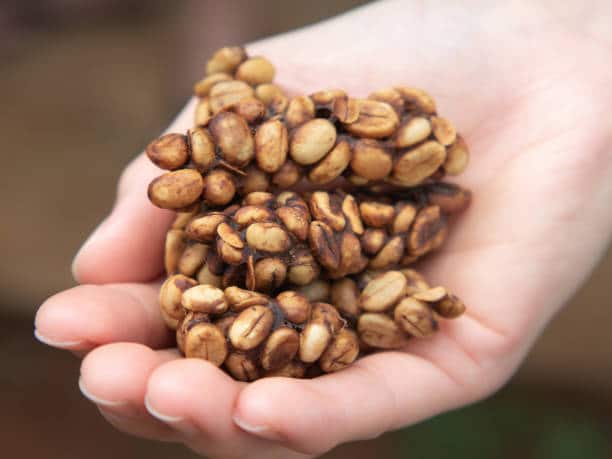
Researchers from the University of Florida conducted an experiment to subject coffee beans to a similar condition as a civet’s digestive system to formulate Kopi Luwak without the use of animals, and they filed a patent for it.
Afineur, a Brooklyn-based start-up, first developed the fermentation process. The coffee beans were reported to have higher nutritional value and better taste than the Kopi Luwak from civets.
Several Vietnamese companies also started this practice of making Kopi Luwak without using the actual animals. They subject the coffee to a concoction of enzymes that are claimed to have the same composition as the digestive enzymes of a civet.
This is done to stop the mistreatment of animals while still being able to produce a premium quality coffee that is loved by many. The production will also be much more abundant, guilt-free, and efficient. It won’t be as labor-intensive as the primitive method, so it would not cost as much as the original.
The product will be much more appealing to consumers because of the safe and ethical production method and more affordable pricing.
Brewing espresso from Kopi Luwak
A cup of Kopi Luwak can cost around 10 to 20 dollars. If you want to savor civet coffee’s flavor truly, you must be meticulous in following the brewing process. Roasting should be done less than a week beforehand, and you should only grind the beans minutes before using them.
You can use the ground coffee for any brewing method without using paper filters to preserve the essential oils. The equipment must be clean before brewing, and the water temperature and contact time should be accurately measured.
Conclusion
Kopi Luwak has an undeniable appeal to coffee enthusiasts. The only downside is that the ones being enjoyed today are not prepared ethically and often have a sad story behind them. Mass production involves mistreating wild civet cats, and the coffee does not even get good reviews from some critics.
But with the new certification program by the Rainforest Alliance and UDZ, those poor practices will be abolished, and stricter standards to comply with to get a certification.
We can say that it is extremely hard to find ethically produced Kopi Luwak, so we do not recommend patronizing it right now because you will only be enabling the companies who engage in animal abuse to obtain civet coffee.
FAQs (Frequently asked questions)
Is Kopi Luwak clean and safe to drink?
Yes. The beans of Kopi Luwak undergo a very thorough washing process and are then roasted at more than 400 degrees Fahrenheit. With these processes, the resulting coffee products are rendered safe for consumption.
Though the idea of its origin may be somehow disgusting, some of the food products we enjoy are also from non-appealing things like steak, which is meat from a dead animal, mushrooms and potatoes that grow on manure, and cheese, which is just moldy milk lumps.
Where is Kopi Luwak produced?
Kopi Luwak production can be found in Indonesia, the Philippines, and Vietnam. Around 500-700 kilograms (1100-1500 pounds) of Kopi Luwak are produced yearly.
In Indonesia, Kopi Luwak is popular in Bali, East Timor, Java, Sulawesi, and Sumatra. Majority of the world’s total Kopi Luwak products come from Sumatra.
Kopi Luwak has a lot of names in the Philippines depending on the region from which it originates. In the valleys of Cordillera, it is called kape motit. Tagalogs call it kapé alamíd. It goes by kapé melô or kapé musang in Mindanao. And in Sulu, they call it kahawa kubing.
In Vietnam, it is referred to as cà phê chồn, which means weasel coffee. Vietnam has the least contribution to Kopi Luwak production among the three countries.
How much is Kopi Luwak, and what makes it so expensive?
A single bag of Kopi Luwak which weighs 1 lb or 454 grams, can be bought for a whopping $600, roughly equivalent to $1300 for every kilogram of beans. It is regarded as a coffee for the elite.
Poor quality Kopi Luwak already costs $100/kg in huge Indonesian supermarkets as opposed to local arabica coffee, which is almost five times cheaper. In local cafes, one cup of brewed Kopi Luwak can cost from $35 to $100 outside Asia. In Bali, where Kopi Luwak is a popular commodity, one cup is only $4.
The rarity of Kopi Luwak makes it a very sought-after type of coffee. The demand is high, but the supply is rather low due to how it is obtained and processed. People are intrigued with the uniqueness and exotic appeal of the coffee. Because the acquisition of kopi luwak depends on civet cats, the decline in their population also affected the production, raising the price as a result.
Disclaimer: This post contains affiliate links, which means I may receive a small commission, at no extra cost to you, if you make a purchase using these links. Remember to support us by purchasing through the Amazon/Walmart/Impact Radius links provided. Last update on 2024-04-25 / Affiliate links / Images from Amazon Product Advertising API
Disclosure: No compensation or free products were received in exchange for writing this review.

Editorial Staff
The editorial staff at Crazy Coffee Crave is a team of coffee enthusiasts & Baristas who enjoy the one thing we all think about as soon as we get up in the morning. Trusted by thousands of readers worldwide.






